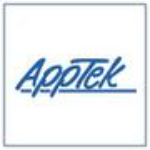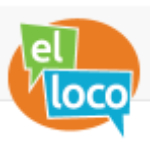TechnologyCounter provides genuine, unbiased real user reviews to help buyers make informed decisions. We may earn a referral fee when you purchase through our links, at no extra cost to you.
List of Best Localization Software
Showing 1 - 13 of 13 productsAlchemy CATALYST is a software designed to streamline the localization process for businesses. With its advanced features and user-friendly interface, Alchemy CATALYST allows for efficient translation and seamless collaboration, making it an indispen...Read Alchemy CATALYST Reviews
Lionbridge is a leading global provider of language and translation services, working with some of the worlds top brands to help them communicate effectively with audiences worldwide. With a focus on accuracy and cultural sensitivity, Lionbridge ensu...Read Lionbridge Reviews
AppTek is a leading software company that specializes in providing advanced language technology solutions for businesses and organizations around the world. With a team of highly skilled experts and a proven track record of success, AppTek offers inn...Read AppTek Reviews
Respresso is a software designed to streamline and optimize your apps localization process. With its efficient and user-friendly features, Respresso simplifies the management of translation projects, allowing developers to focus on creating exception...Read Respresso Reviews
El Loco is a new software that will take your business to new heights. With its innovative features and user-friendly interface, El Loco is set to change the game for businesses of all sizes. Get ready to streamline your operations, boost efficiency,...Read El Loco Reviews
Rask AI is a solution for streamlining your business processes. With its advanced technology, Rask AI is designed to transform the way you work, making it easier, more efficient and more productive. Let Rask AI take your business to the next level...Read Rask AI Reviews
Alconost is a leading software localization and translation company that strives to break barriers and connect businesses with global audiences. With years of experience and a team of skilled professionals, Alconost offers top-notch localization serv...Read Alconost Reviews
cloudwords is a and innovative software that streamlines the localization process for businesses of all sizes. With its user-friendly interface is a features, cloudwords revolutionizes the way companies handle multilingual content, allowing them to r...Read Cloudwords Reviews
OneSky is a translation platform that helps businesses and organizations of all sizes expand their global reach through seamless translation and localization services. With a simple and user-friendly interface, OneSky makes it easy to break language...Read OneSky Reviews
Localize is a solution for seamless translation and localization. Say goodbye to language barriers and hello to global success with our intuitive software. With Localize, reach a wider audience and make meaningful connections without worrying about c...Read Localize Reviews
Text United is a translation software that streamlines the entire process of creating and managing multilingual content. With its advanced technology, intuitive interface, and extensive range of features, Text United is the go-to solution for busines...Read Text United Reviews
Fluency Now is a language learning software that will revolutionize your fluency journey. Designed with your success in mind, Fluency Now offers a unique and immersive approach to mastering a new language. Get ready to speak with confidence and unloc...Read Fluency Now Reviews
Fluency Now is a language learning software that will revolutionize your fluency journey. Designed with your success in mind, Fluency Now offers a unique and immersive approach to mastering a new language. Get ready to speak with confidence and unloc...Read Fluency Now Reviews
Respresso is a software designed to streamline and optimize your apps localization process. With its efficient and user-friendly features, Respresso simplifies the management of translation projects, allowing developers to focus on creating exception...Read Respresso Reviews
AppTek is a leading software company that specializes in providing advanced language technology solutions for businesses and organizations around the world. With a team of highly skilled experts and a proven track record of success, AppTek offers inn...Read AppTek Reviews
- What Is Localization Software?
- Top Reasons Why Businesses Need Localization Software?
- What Are the Top Key Features of Localization Software?
- What Are the Top Benefits of Localization Software?
- What Are the Steps to Choose the Right Localization Software?
- What Are the Types of Localization Software for Different Industries?
- What Are the Technology Trends for Best Localization Software?
- What Are the Deployment Options for Localization Software?
What Is Localization Software?
Localization software refers to a specific category of software designed to facilitate the process of adapting the characteristics of a product or service to other languages, geographies, or cultures, hence enhancing accessibility and usability for diverse user populations.
This aspect holds significance for multinational corporations or organizations that have operations in several nations or regions, as it enables them to effectively cater to their consumer base by offering a product that has been tailored to suit the preferences and demands of their target market.
As an illustration, a multinational corporation operating an online banking platform across multiple nations would seek to adapt its online banking software to cater to the linguistic and cultural preferences of clients in each respective country.
The best localization software plays a crucial role in facilitating organizations' ability to make necessary adjustments to their products or services in accordance with diverse regional and cultural conventions, as well as various languages. Additionally, this guarantees that the product is capable of functioning and being presented effectively across several languages.
The software possesses the capability to assist firms in meeting the demands of their clients by considering diverse cultural norms and delivering suitable information and services. Through the utilization of localization software, enterprises have the ability to effectively showcase their products to the intended audience in a manner that is enhanced in terms of visibility, accessibility, and appropriate localization.
This facilitates the enhancement of client experiences and the optimization of offerings to cater to the demands of the local market. In essence, this facilitates the establishment of prosperous enterprises by corporations operating in diverse geographical areas and cultural contexts.
Top Reasons Why Businesses Need Localization Software?
1. In order to generate material that can be readily understood and connected with by customers and prospects, as well as to expand the reach of the message to a broader audience.
2. In order to guarantee the accuracy and consistency of translated content across several languages.
3. In order to enhance user experience and increase search engine presence in different regions, it is necessary to localize website content.
4. In order to guarantee adherence to regional rules and linguistic prerequisites.
5. In order to guarantee a fair and accurate representation of delicate cultural subtleties, it is imperative to maintain a balanced and reflective approach in the creation of localized material.
6. In order to minimize the physical labor and time required for the creation and upkeep of localized content.
7. In order to effectively monitor localized versions, it is necessary to maintain consistency despite modifications made to the original content over time.
8. In order to ensure that diverse nations receive tailored messages that accurately represent the distinct values and culture of each respective region.
9. In order to enhance user engagement, it is proposed to provide localized content in multiple languages.
10. The objective is to effectively handle product catalogs, pricing, and customer service across multiple regions.
11. In order to effectively monitor customer feedback across several locations and promptly handle any consumer complaints or issues, it is imperative to have a comprehensive system.
12. In order to enhance customer happiness and optimize the entire user experience, it is imperative to offer localized information.
13. In order to facilitate the translation of dynamic data, such as newsletters, banners, and other online promotional materials.
14. The objective is to offer an affordable means of facilitating collaborative efforts in the creation and management of localized content.
15. In order to ensure continuous support for many language versions and timely delivery of new versions across different areas.
What Are the Top Key Features of Localization Software?
The top key features of localization software include:
1. Machine Translation: Machine Translation (MT) refers to the automated method through which software is able to rapidly convert text into several languages.
2. Language Identification: This functionality is designed to detect and determine the language of the original text and afterward do an automated translation.
3. Glossary Creation & Management: Glossaries are compilations of vocabulary, proper nouns, and expressions along with their corresponding translations. They serve the purpose of maintaining translation consistency during the process of localization.
4. Context Analysis: The best localization tools to discern the contextual nuances of the source language, hence facilitating precise translations that faithfully capture the intended meaning and purpose of the original text.
5. Cultural Adaptation: This functionality allows for the incorporation of regional culture, dialects, colloquialisms, and other cultural subtleties into the localization process, hence guaranteeing culturally suitable translations.
6. Quality Assurance: Software may incorporate several functionalities aimed at ensuring quality assurance, such as spell-checkers, automated testing, terminology checks, and other analytical tools, all of which contribute to the attainment of high-quality translations.
What Are the Top Benefits of Localization Software?
1. Improved Cultural Awareness: Localization software plays a crucial role in guaranteeing the accurate translation and appropriate adaptation of material to align with the cultural, societal, and preferential aspects of the target market. This practice aids in the provision of tailored messages for global audiences.
2. Increased Reach: The attainment of a worldwide market necessitates the presence of localized content. Localization software plays a pivotal role in facilitating the expansion of market reach and enhancing exposure in previously untapped regions.
3. Improved User Experience: The provision of region-specific or language-specific content enhances the overall user experience, resulting in increased satisfaction. As a result, there is a subsequent rise in client loyalty and heightened brand recognition.
4. Increased Business Opportunities: Localization management tools have the potential to facilitate convenient access to worldwide business contacts, so enabling the exploration of novel avenues for engaging with hitherto untapped consumer markets.
5. More Cost-Effective: The best localization tools have the potential to decrease the expenses typically associated with conventional translation services, while also streamlining the localization process. This facilitates cost and time savings for businesses.
6. Faster Market Access: The online localization tool has the potential to enhance the efficiency of market entrance processes by minimizing the duration needed to introduce fresh material to the market. This facilitates expedited market entry and consumer acquisition for firms.
7. Enhanced Security: The best localization software has the capability to enhance security measures pertaining to the confidentiality of data. This measure aids in safeguarding sensitive information from unauthorized access.
What Are the Steps to Choose the Right Localization Software?
1. Define your goals: Prior to selecting localization software, it is imperative to establish the objectives for the program, encompassing crucial features, necessary language support, desired level of customization, allocated budget, and other relevant considerations.
2. Research the options: AExamine the offerings of several localization management software companies, encompassing an assessment of the functionality they give and the associated pricing for each available choice.
In order to identify the most suitable software localization platform for one's requirements, it is crucial to undertake a comprehensive evaluation encompassing several factors such as functionality, pricing, and user reviews.
3. Determine support and customization needs: It is important to take into account any requirements for support and modification before concluding. Certain software localization companies manufacturers may provide individualized support and customization choices, whereas others may have limited or nonexistent customization capabilities.
4. Assess the cost: It is imperative to consider the inclusion of supplementary expenses that may be necessary for the procurement and upkeep of the program, such as annual fees or recurrent charges.
5. Look for integration options: Evaluate the compatibility of the translation software with various systems employed inside the firm, including but not limited to CRM systems, project management software, and e-commerce platforms.
6. Choose the right solution for your needs: Select the localization software that aligns with your specific requirements and financial constraints. The selection of a program that will yield long-term success for a corporation is of paramount importance.
What Are the Types of Localization Software for Different Industries?
There are a variety of localization software packages available for different industries. Here is a list of some of the most common types of software localization management:
1. Medical Localization Software: This particular software is employed for the purpose of translating medical record paperwork and laws, together with healthcare language and acronyms.
2. Software Localization: This software facilitates the translation of software applications into many languages and encompasses a range of tools for design and development, text localization, quality assurance, and publishing.
3. Website Localization Software: This particular form of language localization software solution provides a range of tools designed to facilitate the translation of webpages into various languages. Additionally, it has functionality for generating web page and sitemap files in several languages.
4. Game Localization Software: The purpose of this software is to facilitate the translation of video games into multiple languages. The software provides a range of functionalities including text localization, audio localization, dialog translation, and quality assurance.
5. Automotive Localization Software: The aforementioned software is employed for the purpose of localizing and internationalizing automotive records and data. The software encompasses several functionalities for ensuring adherence to regulations, facilitating language translation, and optimizing the layout and structure of papers.
6. Financial Localization Software: The aforementioned software facilitates the translation of documents and reports into many languages for financial institutions. This application is employed to ensure adherence to regulations and provides features such as automatic cost estimation and workflow tracking.
What Are the Technology Trends for Best Localization Software?
The prevailing technology trends in the realm of localization software encompass a range of cutting-edge advancements. These include cloud-based translation management systems, natural language processing technologies, machine translation, computer-aided translation, and automated quality checking tools.
Cloud technology facilitates the storage, management, and accessibility of translation materials for localization service providers, regardless of geographical location. The utilization of natural language processing (NLP) technologies facilitates the automation of translation and localization processes, resulting in translations that exhibit higher levels of accuracy and consistency compared to conventional machine translation approaches.
The utilization of machine translation facilitates the automated conversion of complete texts, hence obviating the necessity for manual interpretation. The utilization of computer-aided translation facilitates the expeditious completion of several activities, including the identification, organization, and categorization of pertinent data.
Automated quality assurance systems facilitate the implementation of quality control measures at various stages of the localization process. These technologies facilitate the ability of localization providers to enhance the quality of their services and efficiently expedite the delivery of translation projects at a lower cost.
What Are the Deployment Options for Localization Software?
There exist three primary deployment options for localization software.
1. One option is the On-Premise approach, which necessitates the installation of translation software within the customer's own environment.
This feature empowers the customer to exert maximum control over their software localization platform, enabling them to tailor it precisely according to their individual requirements.
Nevertheless, this particular deployment choice necessitates the customer's responsibility for managing and upkeeping the localization software autonomously.
2. The second alternative entails the utilization of a Cloud-based approach, wherein the customer is responsible for hosting their best localization software on a cloud platform.
This feature enables customers to access the localization tools remotely, regardless of their geographical location, hence eliminating the necessity of maintaining and managing localized software.
Nevertheless, this alternative necessitates the consumer to place their faith in the cloud provider to manage their localization data.
3. The third alternative is Managed Services, a hybrid solution that amalgamates the advantages of both On-Premise and Cloud-based deployment.
This alternative provides customers with increased autonomy and flexibility in customizing their top localization software, while also benefiting from the service provider's remote management and maintenance of the program.
This particular choice offers customers a comprehensive managed service, while also granting them the capability to remotely access their localized software.












